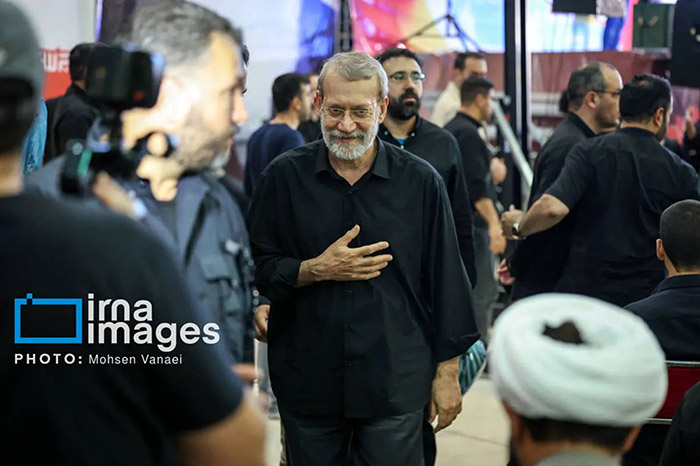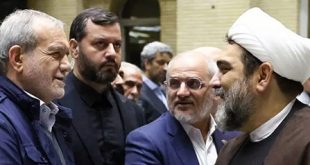President Pezhakian arrived shortly after Maghrib prayers, welcomed by loud chants of “Salam bar shahidan!” (“Peace upon the martyrs!”) and was immediately joined by Ejei and Qalibaf. Behind them stood a cross-section of Iran’s civil and military elite: senior commanders from the Islamic Revolutionary Guard Corps (IRGC), the Army, the Basij Force, police officials, members of the Expediency Council, and city governors. Many wore black in mourning, some donning keffiyehs as a sign of revolutionary solidarity.
Rows of white chairs had been set in the courtyard and the prayer hall, each adorned with a portrait of a martyr or a verse from the Qur’an. As the mosque’s powerful speakers echoed with the recitation of Surah Al-Fajr—a chapter deeply associated with martyrdom and the hereafter—attendees sat in respectful silence, heads bowed in reflection.
Honoring the Blood That Guards the Republic
The term “martyrs of Iran’s authority” (shohadā-ye eqtedār-e mellī) has, in recent years, come to denote a broad category of those killed in the defense of Iran’s national strength and ideological integrity—whether on the battlefield, during internal security operations, in acts of terror, or as a result of targeted assassinations by foreign powers.

